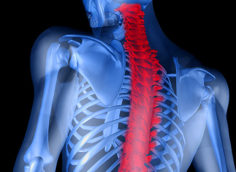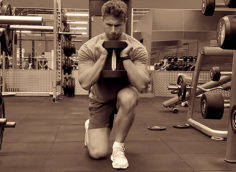The trap bar (or hex bar) deadlift is one of my favorite exercises. It's an incredibly effective exercise which targets the quads, hamstrings, glutes, abs, lower back, forearms, and traps. Talk about bang for your buck!
The trap bar deadlift is kind of a hybrid lift. Obviously, you deadlift the bar off the floor. However, the movement pattern is closer to a squat. This allows you to hit that same deep knee angle as you would in a squat but in a much more comfortable way.
This greater knee flexion makes the trap bar deadlift look more like a squat than a conventional deadlift. As a result, the trap bar requires the quads to work harder than they would with a straight bar.
The trap bar also allows you to maintain a more upright torso angle. This reduces the stress on the lower back and can help to minimize the risk of injury.
Here's a quick overview of the benefits of the trap bar deadlift:
- Trains almost the entire body.
- Causes more quad activation than regular deadlifts.
- Reduces strain on lower back because of more upright torso angle.
- Involves greater forces than conventional deadlifts.
- Produces higher peak power outputs than deadlifts.
- Allows you to achieve higher bar speeds than straight bar deadlifts.
I often program it as a "key indicator lift" for my clients. If their numbers on the trap bar are steadily climbing it's a pretty good indicator the program as a whole is working. While the trap bar deadlift is great, one small adjustment can make it even better.
Matching up the resistance profile of an exercise with the working muscles' strength curves increases the effectiveness of the exercise. Given the trap bar deadlift is a lot like a squat, it can be classified as an extension movement pattern. This movement pattern has an ascending strength curve. That is, you get stronger throughout the range. You're weakest at the bottom and strongest at the top.
This means the load you can lift is limited by what you can lift off the floor (your weakest position). As a result, your muscles are only working maximally through the early part of the range. By modifying the lift to match this strength curve you can challenge the muscles across the entire range and make it a more effective muscle builder.
Doing this with the trap bar is very simple: attach bands to the bar. You don’t need specialized equipment or band pegs; you can just stand on the bands.
- Camara KD et al. An examination of muscle activation and power characteristics while performing the deadlift exercise with straight and hexagonal barbells. J Strength Cond Res. 2016 May;30(5):1183-8. PubMed.
- Lake J et al. Effect of a hexagonal barbell on the mechanical demand of deadlift performance. Sports (Basel). 2017 Dec;5(4):82. PMC.
- Swinton PA et al. A biomechanical analysis of straight and hexagonal barbell deadlifts using submaximal loads. J Strength Cond Res. 2011 Jul;25(7):2000-9. PubMed.





